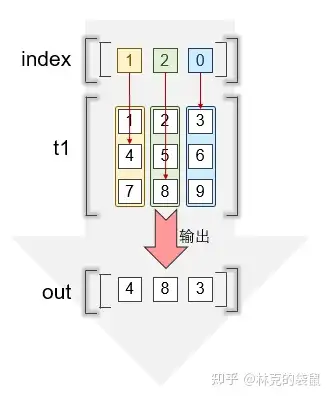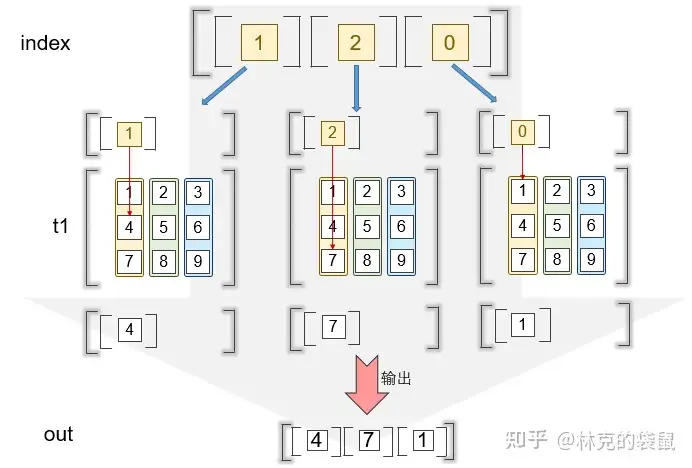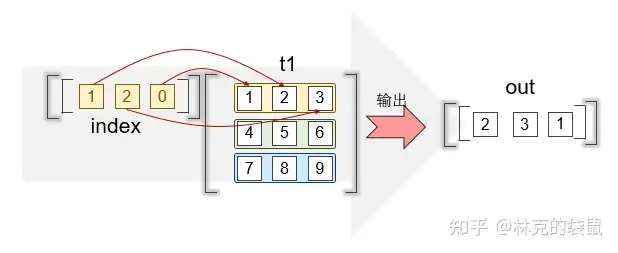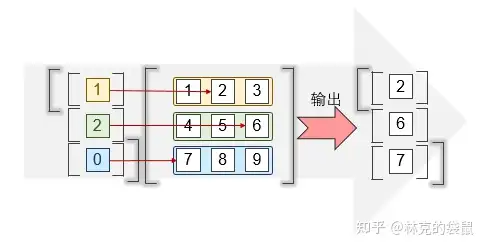动手学强化学习(八.1):torch.gather
tensor.gather()的作用就是按照索引取对应的数据出来。之前看图解PyTorch中的torch.gather函数,那个图示看得我有点懵逼,所以自己画了两张图总结了一下规律来理解一下。
首先新建一个3*3的二维矩阵。
import torch
t1 = torch.tensor([[1, 2, 3],
[4, 5, 6],
[7, 8, 9]])tensor.gather()主要有两个参数,第一个是dim,用来判断是对行还是列进行索引;第二个是索引的矩阵(这个必须是tensor,不能是list类型),这个索引是令人不太好理解的地方,下面我用两三个例子帮助理解一下。
按列取 -> "上下结构"
按列取,那么dim = 0。
t1.gather(dim = 0, index = torch.tensor([[1, 2, 0]]))
# tensor([[4, 8, 3]])
t1.gather(dim = 0, index = torch.tensor([[1],
[2],
[0]]))
# tensor([[4],
# [7],
# [1]])
按照上面的逻辑,你就可以尝试各种奇怪的索引:
t1.gather(dim = 0, index = torch.tensor([[1, 0],
[2, 1],
[0, 0]]))
# tensor([[4, 2],
# [7, 5],
# [1, 2]])按行取 -> "左右结构"
这里需要将dim=1。
t1.gather(dim = 1, index = torch.tensor([[1, 2, 0]]))
# tensor([[2, 3, 1]])
t1.gather(dim = 1, index = torch.tensor([[1], [2], [0]]))
# tensor([[2],
# [6],
# [7]])
不过我感觉按行还是按列是异曲同工,按照你自己的习惯来吧。
除此之外也可以类似于numpy的直接用索引值去抓:
t1[[0, 2], [2, 1]]
# tensor([3, 8])



【推荐】国内首个AI IDE,深度理解中文开发场景,立即下载体验Trae
【推荐】编程新体验,更懂你的AI,立即体验豆包MarsCode编程助手
【推荐】抖音旗下AI助手豆包,你的智能百科全书,全免费不限次数
【推荐】轻量又高性能的 SSH 工具 IShell:AI 加持,快人一步
· 阿里最新开源QwQ-32B,效果媲美deepseek-r1满血版,部署成本又又又降低了!
· 开源Multi-agent AI智能体框架aevatar.ai,欢迎大家贡献代码
· Manus重磅发布:全球首款通用AI代理技术深度解析与实战指南
· 被坑几百块钱后,我竟然真的恢复了删除的微信聊天记录!
· 没有Manus邀请码?试试免邀请码的MGX或者开源的OpenManus吧
2021-03-05 python(一 ):python生成XML文件代码